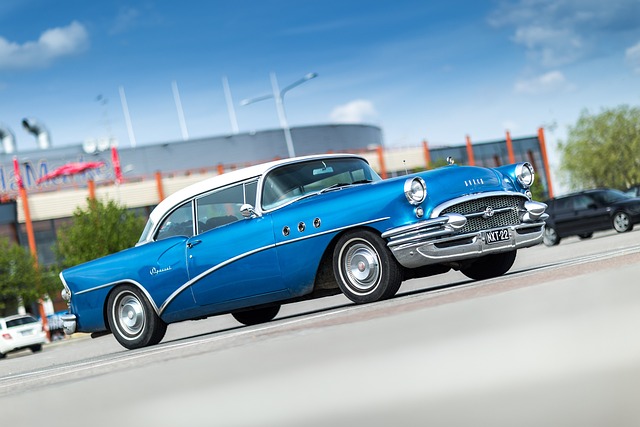Registering a car in California is a straightforward process, but understanding the requirements is crucial. This guide will walk you through each step, from gathering essential documents to visiting your local DMV. We’ll emphasize the importance of verifying the Vehicle Identification Number (VIN) and highlight the associated fees. By following these simple steps, guided by a reliable dmv vin verifier, ensure a smooth car registration experience in California.
- Understand California Car Registration Requirements
- Gather Necessary Documents for Registration
- Visit Your Local DMV: Steps to Register
- Verify Vehicle Identification Number (VIN)
- Pay Registration Fees and Receive Plate
Understand California Car Registration Requirements

Before registering your car in California, it’s crucial to understand the state’s specific requirements. The California Department of Motor Vehicles (DMV) mandates several key steps for car registration, including a vehicle identification number (VIN) verification process. This involves ensuring that the VIN on your car matches the information on record with the DMV.
A reliable method for VIN verification in California is through a mobile vin verifier or inspection service, which allows you to complete this step conveniently. By utilizing these services, you can have your vehicle’s VIN checked remotely, ensuring compliance before proceeding with registration. This technology streamlines the process, especially if you’re registering a new or imported vehicle, and helps avoid potential delays or issues at the DMV.
Gather Necessary Documents for Registration

Before heading to the California Department of Motor Vehicles (DMV) for registration, ensure you have all the required documents in order. The process begins with gathering important paperwork that will facilitate a smooth and efficient registration experience. One crucial document is the Vehicle Identification Number (VIN) verifier, which can be obtained through various official channels, including mobile vin inspection services. These services offer a convenient way to verify your vehicle’s VIN, a critical component for registration.
Additionally, you’ll need basic documents like proof of ownership, typically a title or bill of sale, and valid identification such as a driver’s license. It is also recommended to bring along any previous registration records or out-of-state registration documents if applicable. With these essential papers ready, you’re well-prepared to navigate the registration process at the DMV with ease.
Visit Your Local DMV: Steps to Register

To begin the registration process for your car in California, the first step is to visit your local Department of Motor Vehicles (DMV) office. This is where you’ll complete the necessary paperwork and provide essential information about your vehicle. The DMV will also conduct a Vehicle Identification Number (VIN) verification, using specialized tools like a VIN scanner or verifier, to ensure the vehicle’s details match the records.
Once at the DMV, you’ll need to bring along various documents, including proof of ownership, proof of insurance, and a valid driver’s license. You can also expect to pay a registration fee, which varies depending on your vehicle type and age. If you prefer, many DMV locations now offer mobile services for certain transactions, including mobile VIN inspection and registration renewal, providing added convenience for California drivers.
Verify Vehicle Identification Number (VIN)

Before registering your car in California, it’s crucial to ensure that all necessary information is accurate and valid, starting with verifying the Vehicle Identification Number (VIN). This unique code is like a fingerprint for your vehicle and plays a vital role in the registration process. You can confirm the VIN through various means, including using an online DMV VIN verifier or employing a mobile vin verification service.
A mobile vin inspection, done by professionals equipped with specialized tools, ensures that no details are overlooked. This step is particularly important as incorrect VIN information can lead to delays or even rejection of your registration application. So, whether you opt for a traditional vin inspection at a DMV office or leverage modern solutions like a mobile vin verification service, ensuring the VIN’s correctness is an indispensable part of the car registration process in California.
Pay Registration Fees and Receive Plate

After completing your vehicle’s registration application at the California DMV, the next step is to pay the required fees. These fees include the registration cost and a vehicle identification number (VIN) verifier fee. The VIN verifier fee covers the use of specialized equipment that checks your car’s history and ensures it meets safety standards. Once you’ve settled the fees, the DMV will process your application and issue a registration certificate.
Along with this certificate, you’ll receive your new license plate. The DMV offers both standard and custom plates to choose from, catering to various preferences. For a seamless experience, consider using a mobile VIN verifier for the inspection portion of the process. This convenient option allows you to complete the VIN inspection from anywhere, eliminating the need for an in-person visit to a DMV office.
Registering a car in California is a straightforward process once you understand the requirements and have all the necessary documents. By following these steps, from gathering paperwork to visiting your local DMV and verifying the Vehicle Identification Number (VIN), you’ll be on your way to securing a set of plates for your vehicle. Don’t forget to check with your local DMV regarding any additional fees or specific procedures that might apply. Utilize a dmv vin verifier to ensure a smooth process, making it easier to navigate this essential task.
